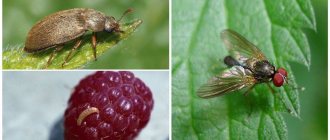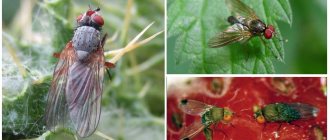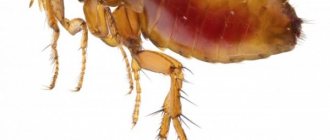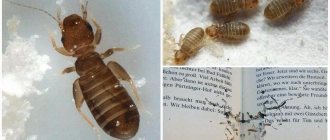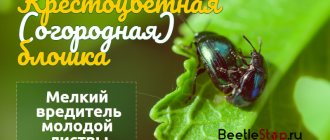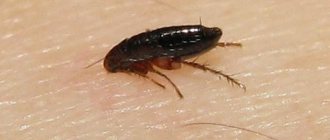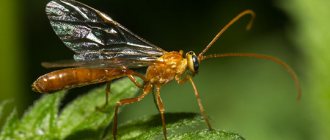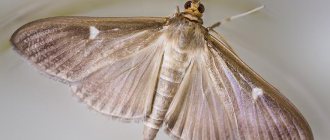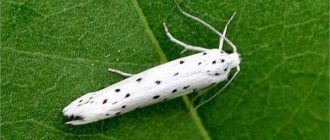Causes of infection
Among the reasons for the appearance of lice are poor hygiene, stress, and chronic diseases. However, in fact, there is only one cause of lice - direct infection through contact with a carrier of the parasites. Lice cannot jump like fleas, so contact must be close enough for an infestation to occur.
Public transport
You can become infected with lice:
- in public transport (especially crowded ones);
- in a store fitting room (lices can move from an infected person to an item, and the next victim will be the next one trying on the same item);
- in a swimming pool;
- in a beauty salon.
The main variants of infection in kindergarten:
- physical contact – children constantly touch each other’s hair while playing;
- other people's things - kids exchange hats, hairpins and headbands, combs; this also includes sleeping on someone else's pillow.
The idea that lice grow in dirty hair is another common misconception. During the research, it turned out that parasites feel more comfortable on clean skin.
Causes of head lice in children
Head lice are common among children, but they have no special feelings about them. Child lice feel good on any head. In general, children pay less attention to personal space, come into physical contact with each other more often, and also like to share items of clothing or combs, which ultimately makes it easier for parasites to move from head to head.
Among other reasons, this may be due to the acidity (pH) of a person's scalp. The pH value of the skin varies, but is between 4.5 and 5.5, which corresponds to an acidic pH.
This acidic layer is the first barrier against various infections, be it bacteria, viruses or fungi. When we are born, the acidity of our skin is 7 (neutral pH) and gradually changes as we grow. The acid layer is almost completely formed only by the age of 12. This is why children are more likely to get lice than adults.
It is a mistaken belief that only dirty children or those who do not maintain personal hygiene become infected with lice.
It is important to explain to them that they should not wear other people's hats or use combs that are not their own.
archive.boston.com why_do_kids_get_lice_so_much_often_than_adults/ (why do kids get lice so much more often than adults?) headlinecenter.com
Symptoms of lice
Lice infestation manifests itself quite quickly; after 1-2 days it can be identified by the presence of the following signs:
- severe itching of the scalp;
- bite marks (swelling sometimes with a drop of dried blood in the center);
- the appearance of a rash, peeling;
- the presence of adult parasites and nits at the hair roots at a distance of about 1 cm from the skin;
- the child may feel insects moving in the hair.
In addition, due to constant itching, children become irritable, sleep worse, and have problems with performance, concentration and attentiveness.
How to withdraw?
If parasites are found in a child, parents need to take timely measures to destroy them. The main thing is not to panic, be patient and calm.
Diagnosis of pediculosis usually does not cause difficulties, but to establish an accurate diagnosis and prescribe treatment, you can consult a doctor.
Mechanical and chemical methods are used to remove lice and nits. Pharmacies offer a wide selection of repellents that allow you to quickly get rid of parasites. You can use shampoo, spray or lotion “Paranite”. It contains a complex of mineral oils, it is non-toxic and absolutely harmless to the skin and respiratory organs.
Hellebore water is also used to treat pediculosis. It is used in combination with combing with a special comb and observing safety precautions due to toxicity.
All residents in the house must be carefully examined and, if detected, appropriate treatment measures must be taken. Such examinations must be carried out weekly until complete recovery.
Be sure to organize washing of the infected person’s personal belongings and the whole family’s bed linen. Hats, combs, hairpins and towels need careful processing.
If they independently discover lice on their child, parents are required to inform the school paramedic or class teacher. There is no point in hiding and hushing up the infection in such a situation; this can lead to the further spread of head lice among school students.
Employees of the educational institution, in turn, must take measures to prevent the growth of the disease.
Regulatory regulation of the activities of kindergartens
All sanitary requirements for preschool organizations are set out in SanPin 2.4.1.3049-13. The document includes rules and regulations concerning all aspects of the functioning of educational institutions for preschool children:
- placement of a kindergarten;
- maintenance and arrangement of the adjacent territory;
- operating conditions and arrangement of internal premises;
- natural and artificial lighting;
- operation and repair of heating and ventilation systems;
- operation and repair of water supply and sewerage systems;
- food preparation and serving;
- reception of children, daily routine and organization of the educational process;
- basic anti-epidemic and hygienic measures.
Inspection
SanPin, in particular, establishes measures to prevent head lice in preschool institutions. The document also regulates the actions that should be taken when lice is detected in a kindergarten and regulates the duration of quarantine.
What activities are carried out in the kindergarten from the moment lice are discovered?
If lice are found in at least one of the kindergarten students, certain measures must be taken:
- the infected child is isolated from other children;
- conduct an examination of the remaining children who were in contact with the infected person in the group;
- the teacher or nurse informs parents about the fact of infection (without disclosing the name of the infected child), advises them on the treatment and prevention of head lice;
- A quarantine is declared in the kindergarten.
During quarantine, disinfection measures are carried out. They include treatment of the room and bed linen.
If lice are found in several children, the administration of the preschool educational institution must transmit information about the outbreak of head lice to the assigned clinic.
A sick child can attend kindergarten only after complete recovery and a certificate from the clinic or SES has been provided.
Useful tips for parents about this disease
Parents should remember that maintaining hygiene is the main prevention of head lice. The baby should regularly take a bath, comb his hair, and have his hair cut. Clothes, shoes and bedding should always be washed and ironed. It is also necessary to clean the apartment regularly.
It is important to teach your child not to take other people’s things, especially a comb or hat. Also, a small schoolchild or kindergartener should know that personal belongings, as well as hygiene items, should not be given to other children.
Unfortunately, maintaining hygiene will not protect your baby from contracting this disease. A little fidget comes into contact with dozens of people a day, travels on public transport, goes for walks, attends kindergarten or school, and it is very difficult to understand where the lice came from.
If your baby does get sick, there is no need to be ashamed, panic, or hide this fact from others. You need to immediately notify everyone who has had contact with your child over the past few days, and be sure to notify the school teacher or kindergarten teacher.
There is no need to worry too much about this, especially if you don’t scold your child for having lice. There is nothing shameful in this - the little fidget is absolutely not to blame for anything.
The mother's worry will only upset the baby, he will feel guilty and unhappy. It is better to calmly and as simply as possible explain to your child what is happening to him, warn him that he should stay at home for some time, and tell him how the treatment will proceed. This approach will help avoid tears and hysterics, and the entire treatment process will be quick and easy.
You can deal with lice by purchasing a special product at the pharmacy. This can be shampoo, ointment, lotion or aerosol. Most products are very easy to use; just follow the instructions.
Bed linen, clothes, pillows and other household items will need to be disinfected.
Parents may not wait for a routine medical examination. You can examine your daughter or son yourself. It is advisable to do this every week. Particular attention should be paid to the area of the head, behind the ears and at the back of the head.
Boys need to have their hair cut regularly; girls should wear braids or ponytails. Braided hair will allow you to quickly examine your baby's scalp.
Parents should remember that the earlier head lice is detected in their daughter or son, the fewer children will become infected later. This issue must be approached seriously, caring not only about the health of your child, but also about the health of other children.
SanPin for staff
In most cases, the appearance of head lice and the spread of parasites in kindergartens is caused by violation of sanitary rules. To avoid this, the administration and medical staff of the preschool institution must carefully study the SanPin on head lice and follow all the instructions specified in it, including preventive measures.
When drawing up an action plan for head lice in a kindergarten, the nurse should also rely on SanPin 3.2.1333-03, which regulates measures for the prevention of parasitic diseases in the Russian Federation.
Inspection procedure
Sanitary rules for head lice describe the actions that health workers must take to prevent epidemics of the disease and prevent:
- preventive examinations of the population are carried out according to a plan approved and agreed upon by higher authorities;
- all preschool educational institutions, kindergartens, orphanages, sanatoriums, rest homes, inpatient organizations, the purpose of which is to ensure the maintenance of child health, are provided with washing, disinfestation, and personal hygiene products;
- first-aid posts and other organizations that treat pediculosis, disinfestation of premises and things, and provide special equipment, machinery, and supplies;
SanPiN for pediculosis is mandatory, the requirements of the new version of the law are taken into account.
The medical worker examines each child in a room with good lighting. Additionally, a fine-toothed comb, a magnifying glass or a magnifying glass is used.
According to the decree of the Ministry of Education, the results of the inspection of the kindergarten are recorded in a special journal. A disease prevention plan is developed independently. The program is developed by a nurse.
If a child is found infected with lice, the nurse acts according to the regulations. Children must be examined for head lice after summer holidays or long weekends. According to the new order on pediculosis, the nurse is required to conduct 12 scheduled checks per year in a preschool educational institution.
It is carried out in a well-lit place with basic tools. A comb or fine-toothed comb, a magnifying glass or a magnifying glass is required.
- Inspection for lice in kindergarten according to SanPiN is carried out every month. The medical worker carefully examines each child or conducts a random examination. The examination results are recorded in a special journal.
- Pediculosis at school is a common occurrence. Routine inspections are carried out 4 times a year. The frequency of preventive measures in schools is the same. It is mandatory for a nurse to examine students before the new school year and after the holidays.
- Children who go on holiday to a health camp or holiday home are examined before departure for the absence of parasitic diseases.
- Patients are examined at the sanitary inspection station before being assigned to inpatient treatment. A visit is made to the address where the patient should live, in accordance with the legislation in Russia.
- In organizations, employees undergo a routine examination once a year.
Responsibility for conducting preventive examinations rests with the medical professional. The results are entered into a special form and a number is entered.
Signs of infection
Parasites feed on human blood, are capable of spreading typhoid fever, and pose a threat to the entire society. The main symptoms of different types of pediculosis are similar to each other, only the location of the parasites differs.
Head lice parasitize the scalp, live in the scalp, eggs cling to the hairs closer to the roots; you can see what lice and nits look like in the photo.
Body lice live outside the human body, building nests in folds, seams of clothing, and bedding. They feed about 4 times a day, so they are often found on the human body. Linen lice bites are located on the body and face. They do not live on the head or genitals.
Pubic lice are most often transmitted through sexual contact. Affects the pubic hair and perineum. With severe infection, parasites are found on the hair of the abdomen, chest, armpits, and eyelashes.
Symptoms of pediculosis:
- severe itching caused by lice bites;
- change in skin color, appearance of spots, rashes;
- scratching on the skin;
- ulcers, wounds, inflamed scratches indicate the addition of a secondary infection;
- roughened areas of the epidermis;
- hair matted with pus and constant itching.
The order on pediculosis obliges medical workers to conduct routine examinations and take measures to eliminate lice.
Lice detection
At the state level, there are rules adopted by the sanitary and epidemiological service (SES) in each city and which all administrative services of children's educational institutions must adhere to.
When, during an examination, a health worker or teacher discovers lice, the first step is to inform the parents of the infected student and make recommendations on how to treat the child from parasites and indicate how many days he will not be able to attend school.
The law establishes a certain procedure for dealing with head lice in schools, which provides for the creation of sanitary and hygienic conditions to prevent the spread of parasites:
- Regular examinations by a nurse or teachers of all students should be carried out, the data is entered into the lice examination log;
- do not allow children with head lice to attend classes, i.e. the answer to the question whether it is possible to go to school with lice is only negative;
- Students who have recovered from the disease can begin classes only by bringing a doctor’s certificate confirming the absence of lice and nits.
Fighting methods
The fight against lice involves mechanical methods and the use of medications. At the initial stage, you can try to comb insects and their eggs out of your hair. A fine comb is used for this.
What will certainly help get rid of lice without the use of chemicals is to cut the child's head, and do it immediately. It is easier for parents of boys to decide on such a step, but girls will most likely categorically refuse such a radical decision.
In this case, it is worth visiting the pharmacy and purchasing one of the many modern remedies for parasites, including:
- shampoos;
- gels;
- emulsions;
- sprays.
Lice remedies
The products must be used according to the instructions. Sometimes one treatment is enough, but most often you will need to repeat it, since not all products have an effect on nits, which means there is a danger that lice will appear again.
If you have head lice in a preschool educational institution and your child brings home lice, it is very important to act comprehensively. This is the only way to quickly get rid of parasites and prevent re-infection. In addition to treating the child’s hair, it is necessary to wash the child’s bedding and clothes with a special product or boil them.
Periodically, it is necessary to conduct a thorough examination of the hair and scalp to make sure that there are no parasites left.
How does infection occur and how to protect your child?
Lice are small blood-sucking parasites that thrive on the human scalp. The most common route of illness is through close face-to-face contact with another person. It is a mistaken belief that lice jump well and can fly. Outside their natural habitat, they are deprived of a food source and quickly die.
However, lice can move quickly, which allows them to move from one host to another. The cleanliness of your hair and scalp does not matter - parasites can transfer to both dirty and washed hair with equal success.
The risk of becoming infected with lice through hairpins, hats, combs, and hair jewelry is almost zero. You cannot become infected with head lice by visiting a pool or sauna, or by swimming in open water. Contrary to existing misconceptions, lice are not carried by animals and do not arise from nerves.
Parasites die at critically low temperatures. But this does not mean that staying in the cold without a hat can eliminate parasites, since the human body still maintains the temperature necessary for their life.
The only way to remove lice is the external use of various drugs or folk remedies. After using them, you need to carefully comb the child’s hair with a special comb with thick teeth so as not to give the remaining single parasites a chance to develop.
Prevention of lice infestation in children plays an important role.
. Unfortunately, no method guarantees complete protection, but following simple rules significantly reduces the risks. Precautions are
- • follow the rules of hygiene, wash your hair at least 3-4 times a week;
- • regularly examine the child even in the absence of symptoms of infection;
- • limit contacts with people leading an unsanitary lifestyle;
- • regularly change and wash underwear and bed linen;
- • keep your premises clean;
- • avoid using other people's combs, hairpins or hats.
Preventive measures in a child care facility include regular examination of all children and isolation of those infected.
Where to complain if there is a lice epidemic in a kindergarten?
If head lice is discovered in a kindergarten, but the administration ignores the problem and does not take appropriate measures to eliminate it, you need to know where to complain. Since the implementation of sanitary norms and rules is controlled by the Sanitary and Epidemiological Service, it is necessary to contact the city or district branch in such situations.
Representatives of the SES are required to visit the kindergarten and confirm the presence of parasitic infection. After the inspection, the management of the preschool educational institution is issued an administrative order, and the kindergarten is closed for quarantine.
